When it comes to American car manufacturers, few brands carry the kind of cultural baggage and emotional weight that Dodge does. For over a century, Dodge has been synonymous with raw power, bold design, and a no-nonsense approach to motoring.
From tire-shredding muscle cars to rugged pickups, the brand has cultivated an identity based on aggression and attitude. But beneath the aggressive styling and roaring exhaust notes lies a much more critical question for consumers: how well are these cars actually built? Do they endure the test of time, or do they begin to shake apart before the new car smell even fades?
The automotive world has always been a mixed bag of innovation, compromise, and cost-saving measures. Every manufacturer has its highs and lows, and Dodge is no exception. While the company has produced some of the most iconic American vehicles in history—the Charger, the Viper, and the Ram 1500, just to name a few—it has also had its share of misses. Models like the Caliber and Dart, despite big marketing pushes and appealing designs, never lived up to expectations in terms of build quality and long-term durability.
This article explores both ends of that spectrum. On one side, we celebrate five Dodge models (plus one bonus entry) that are remarkably well-built—vehicles that resist wear, shrug off rattles, and stay composed even after years of hard use. These are cars and trucks that stand as a testament to solid engineering and thoughtful assembly.
Whether they’re family SUVs, heavy-duty pickups, or track-capable monsters, these models remind us that Dodge, at its best, is capable of manufacturing vehicles that not only perform but also endure.
On the flip side, we’ll dive into five Dodge models that unfortunately didn’t hit the mark when it came to structural integrity and refinement. These are the cars that rattle, squeak, and creak their way into frustration. Often the product of rushed design cycles, budget engineering, or mismatched platform sharing, these models tend to develop issues far too early in their lifecycle. Rattling trim pieces, vibrating dashboards, and loose suspensions aren’t just nuisances—they’re signs of a vehicle that hasn’t been built to last.
Why does this matter? Because longevity and quality still matter to buyers. A car that feels solid inspires confidence. It lasts longer, holds value better, and provides a more enjoyable experience day to day. And in an era where many vehicles are laden with complex electronics and cost-saving materials, the distinction between “solid” and “shaky” becomes more important than ever.
This isn’t just a superficial judgment based on how tightly a door shuts—it’s a deeper look at how design, engineering, and manufacturing practices come together (or don’t) in the final product.
So, whether you’re a longtime Dodge enthusiast, a curious buyer, or just an automotive nerd fascinated by the dichotomy of durability and dysfunction, read on. This is a journey through the best and worst of Dodge’s build quality, where we separate the tanks from the tin cans.
Also Read: 5 Cars That Dealers Can’t Keep In Stock and 5 That Collect Dust
Table of Contents
Toggle5 Dodge Models That Are Built Solid
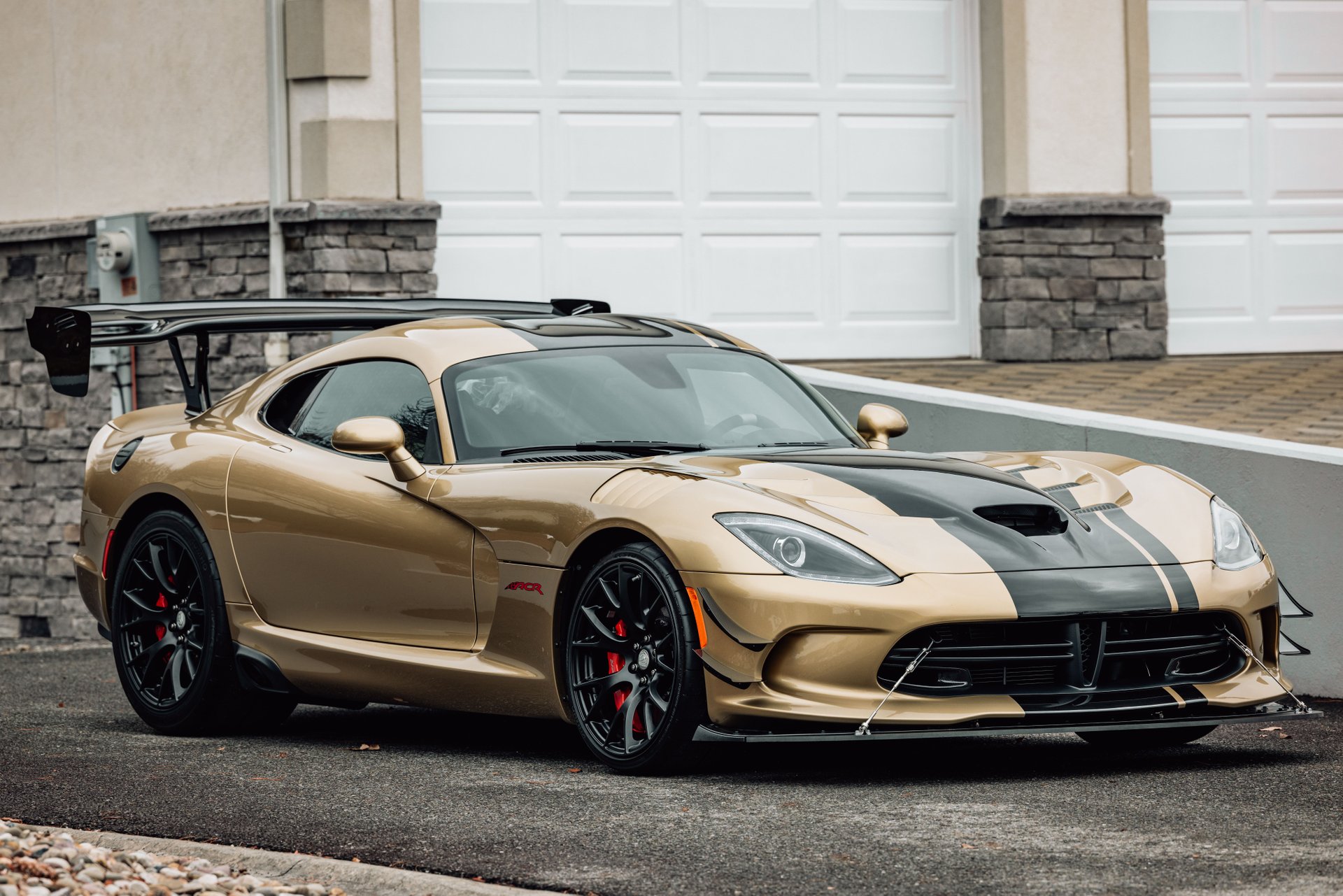
Dodge Viper (1992–2017)
The Dodge Viper, a legend among American performance cars, wasn’t just about brute force—it was also a testament to solid, analog engineering. Introduced in 1992 and produced in several iterations until 2017, the Viper was built with simplicity and strength in mind.
It didn’t rely on complicated electronics or driver aids, instead favoring raw mechanical design. That straightforwardness, paired with a hand-built assembly process, meant that the Viper aged much more gracefully than many high-performance counterparts. Unlike many modern sports cars that develop annoying squeaks and groans as they age, the Viper tends to stay tight, responsive, and unyielding.
The chassis was one of the Viper’s most significant strengths. Built around a tubular steel frame and later upgraded with aluminum and other weight-saving materials, the Viper’s structure was extremely rigid. This rigidity contributed to both its handling prowess and its durability.
Even first-generation models, now over three decades old, exhibit minimal body flex or structural degradation. Owners of older Vipers frequently comment on how “tight” the cars still feel—even with high mileage. That speaks volumes about the attention paid to its skeleton during production.
The exterior bodywork, though made largely of composite materials like fiberglass and carbon fiber in later generations, was mounted with incredible precision. Panel gaps were consistent, and the lightweight panels didn’t flex or loosen easily.
Even in environments with extreme temperature swings, the Viper resisted the kind of creaking or cracking that often plagues performance cars with similar materials. The roof, doors, and hood—all of which are frequent sources of noise in high-powered cars—maintained integrity even after spirited driving on tracks or twisting backroads.
Inside the Viper’s cabin, refinement wasn’t the top priority—but longevity was. The interior, especially in earlier models, was spartan but rugged. The seats were bolstered firmly, the dash and center console were simplistic and tightly assembled, and there was minimal fluff. The later models improved material quality and comfort but never sacrificed solidity.
Buttons stayed in place, gauges remained responsive, and even under the stress of high G-forces or aggressive acceleration, the cabin never fell victim to annoying rattles. While it wasn’t silent, every sound had a purpose—it was a machine built with deliberate noise, not unintended flaws.
Mechanically, the Viper was as solid as they come. The massive 8.0L and later 8.3L and 8.4L V10 engines were overbuilt and under-stressed for the kind of horsepower they delivered. Mated to robust Tremec manual transmissions and heavy-duty differentials, the drivetrain was built to handle abuse—whether from track days, drag strips, or cross-country drives.
These components didn’t wear out quickly, and their mounting systems ensured minimal vibration made its way into the cabin. Altogether, the Dodge Viper stands as a rare example of a supercar that not only performed but also aged with dignity, making it one of Dodge’s most solid and iconic builds ever.
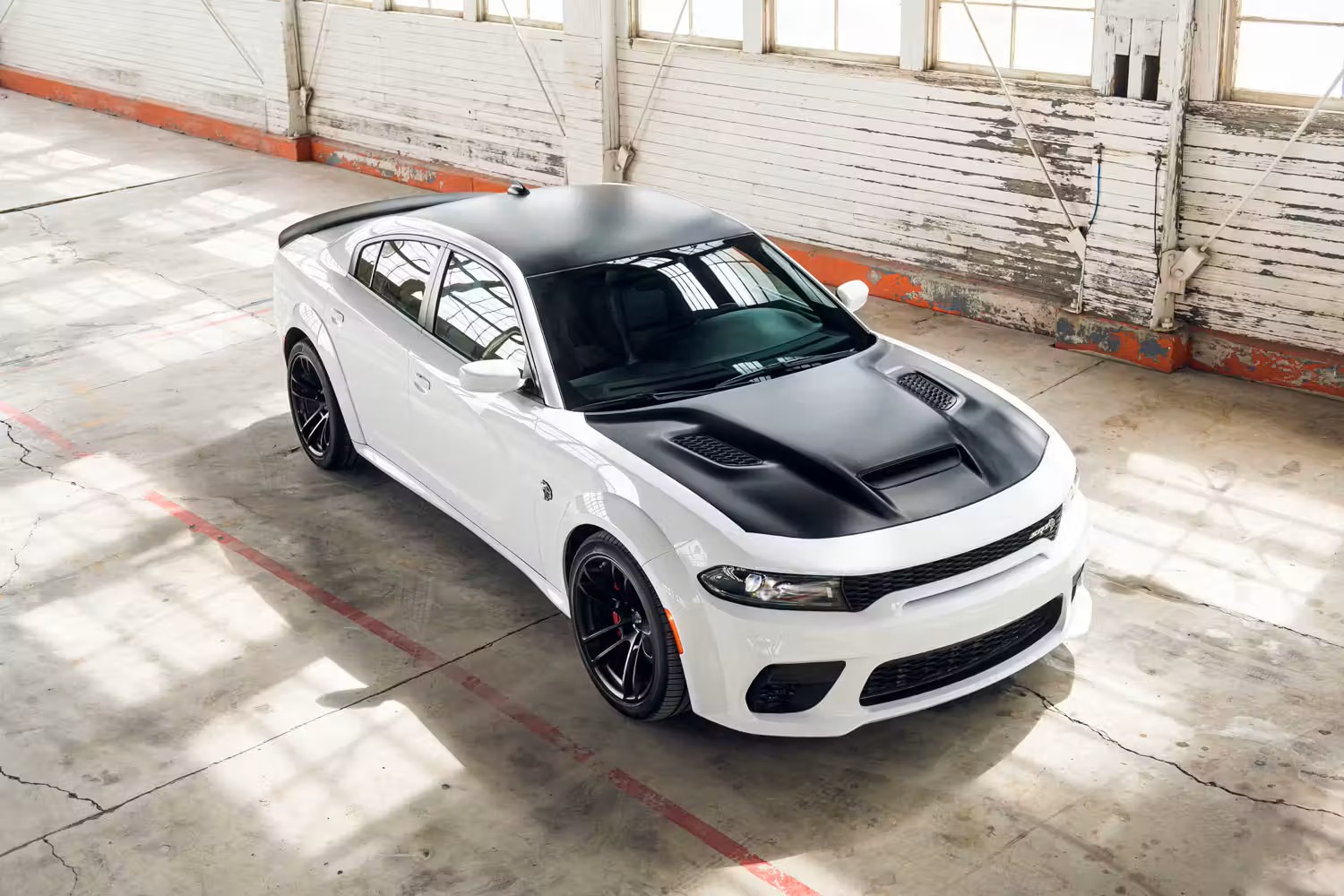
Dodge Charger (2006–Present)
The Dodge Charger has carved out a unique place in the American automotive landscape, offering a rear-wheel-drive sedan with muscle car attitude in an age when most automakers have abandoned that formula. From the moment the sixth-generation Charger was introduced in 2006, it was clear this wasn’t a flimsy grocery-getter.
Built on the LX platform, which benefited from DaimlerChrysler’s access to Mercedes-Benz engineering, the Charger immediately gained credibility as a structurally sound vehicle. The platform’s robust architecture made for a stiff chassis that resisted body flex and absorbed road imperfections with confidence.
One of the most telling indicators of the Charger’s build quality is its popularity with law enforcement. Police departments across North America have relied on the Charger as a pursuit vehicle, often keeping them in service for well over 100,000 miles of hard use.
These vehicles are driven aggressively, idled for long hours, and subjected to harsh weather and road conditions. Yet, many of them remain mechanically sound and structurally tight long after their expected service life. This real-world stress test confirms the Charger’s durability.
Interior quality has also seen significant improvement over the years. While the 2006–2010 models were criticized for their hard plastics and uninspired cabin design, Dodge addressed these issues with the 2011 refresh. The newer interiors introduced softer materials, tighter panel gaps, and better insulation from road and wind noise.
More importantly, the fit and finish held up well over time. Owners often report that even after years of use, the dashboard doesn’t crack, buttons remain functional, and seats retain their shape and support.
Another aspect that contributes to the Charger’s solid feel is its sheer mass. The car is heavy by modern sedan standards, with base models tipping the scales around 4,000 pounds. That weight, while detrimental to fuel economy, gives the car a planted feel on the road and a tangible sense of security.
Doors close with a satisfying thud, the suspension doesn’t clunk over potholes, and the body doesn’t develop rattles easily. That kind of sturdiness adds to the Charger’s enduring appeal.
Finally, the powertrain options themselves are among the most robust in the industry. From the dependable 3.6L Pentastar V6 to the legendary 5.7L, 6.4L, and even the supercharged 6.2L HEMI V8s, the engines powering the Charger are built for performance and longevity. Paired with strong 5- or 8-speed automatic transmissions, these drivetrains have proven reliable even under abusive driving. Whether it’s used as a family hauler or a drag-strip demon, the Charger stays solid and composed for the long haul.
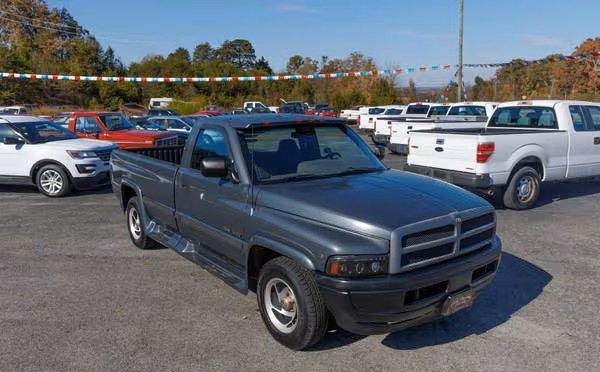
Dodge Ram 1500 (1994–2001)
The second-generation Dodge Ram 1500, introduced in 1994, marked a bold departure from its boxy predecessor and redefined what a full-size pickup could look like. But the aggressive styling wasn’t just for show—the underpinnings of the Ram 1500 were just as serious. The body-on-frame construction, thick gauge steel, and high-strength crossmembers gave this truck a solid foundation that was difficult to shake loose. Owners of these trucks regularly remark on how well the frame has held up, even decades after production ended.
At a time when trucks were transitioning from basic workhorses to everyday family vehicles, the Ram straddled the line beautifully. It offered just enough refinement to attract suburban buyers, but it didn’t sacrifice durability. The suspension components, especially in 4WD models, were overbuilt to take a beating. Control arms, ball joints, and leaf springs were designed with longevity in mind. As a result, even high-mileage examples don’t exhibit the kind of front-end looseness or clunking noises that plague lighter-duty trucks.
The cabin wasn’t luxurious, but it was logically designed and well-assembled. The dashboard was a single molded piece that resisted cracks better than most of its competitors. Controls were large, tactile, and less prone to breaking under repeated use. Seat frames were sturdy, and upholstery—especially the heavy-duty cloth—resisted tearing and sagging surprisingly well. Even today, it’s common to find these trucks with all interior panels intact and minimal creaking from the doors or dash.
A major reason for the Ram 1500’s lasting appeal is its powertrain lineup. The 5.2L and 5.9L Magnum V8s were old-school in the best way—simple, torque-rich, and incredibly hard to kill. Paired with the 46RE and 46RH transmissions, these drivetrains could take abuse with little complaint. Routine maintenance often yielded trucks that ran strong past 250,000 miles. And since the engines were mounted on stout motor mounts and connected to a strong frame, they didn’t contribute to vibrations or body rattle.
Even in adverse environments, like snowy northern states or dry, rust-prone regions, these trucks tend to endure. Properly cared for, they resist corrosion better than many trucks of the era. The result is a vehicle that continues to earn respect from both collectors and working-class drivers alike. The Ram 1500 from this era wasn’t just a turning point for Dodge—it was a triumph in solid American engineering.
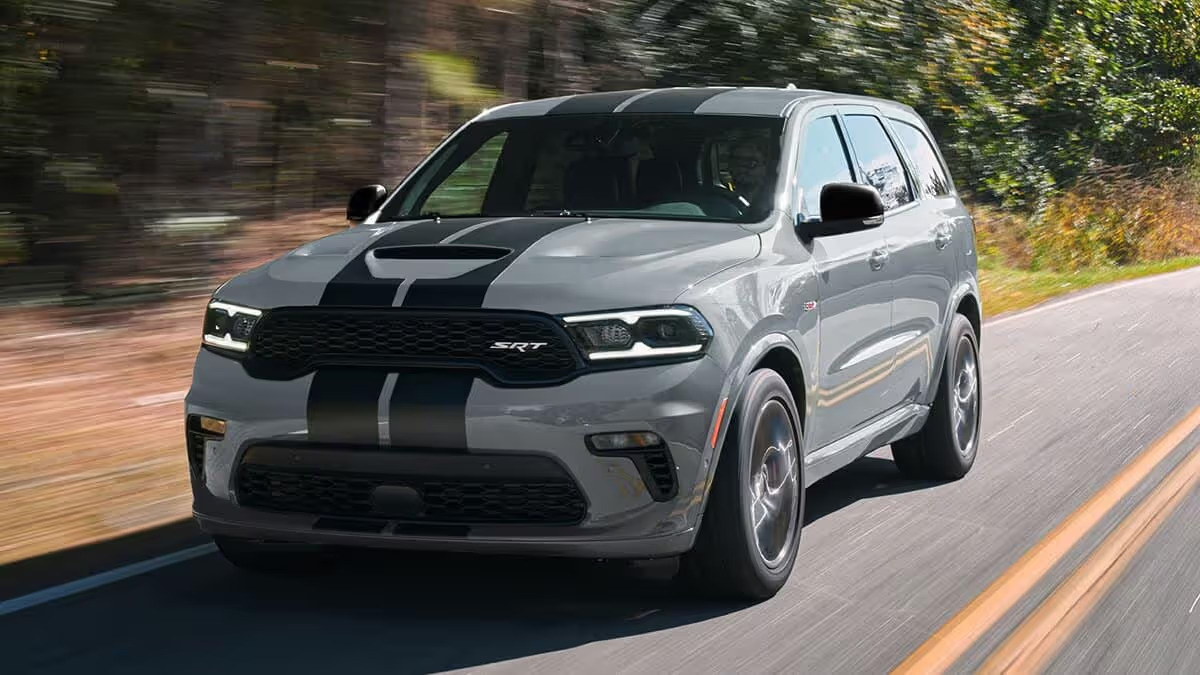
Dodge Durango (2011–2020)
When Dodge brought back the Durango in 2011, it was clear the SUV had matured. Unlike the earlier, body-on-frame versions that felt like scaled-down trucks, the third-generation Durango adopted a unibody design based on the Jeep Grand Cherokee. This platform was a game-changer. It brought with it a level of structural integrity and refinement that surprised many buyers. The SUV felt tight and cohesive, and that feeling lasted even as the odometer climbed.
The body shell of the Durango is remarkably rigid. Torsional stiffness translates to better handling, fewer creaks in the cabin, and a longer-lasting feel. That’s especially important in a three-row SUV, where additional length can introduce structural weaknesses. Dodge addressed this by reinforcing key stress points and using high-strength steel in critical areas. As a result, even after years of use, the Durango resists the body flex that leads to squeaks and rattles in lesser SUVs.
Interior design played a major role in this generation’s success. Soft-touch materials were used more liberally, and Dodge improved assembly quality across the board. Gaps between panels were tightened, and pieces fit together with greater precision. Whether buyers chose a modest SXT or a leather-wrapped Citadel, the cabin felt well-built. Importantly, the door seals, seats, and roof lining maintained integrity over time, even under the wear and tear of family use.
Powertrains were another highlight. The 3.6L Pentastar V6 proved to be both powerful and reliable, while the optional 5.7L HEMI gave the SUV towing muscle and long-haul durability. The introduction of the 8-speed ZF automatic transmission in 2014 improved both performance and longevity. These mechanical components were mounted in a way that minimized noise and vibration intrusion, contributing to a smooth and solid driving experience that holds up as the miles add up.
Another indicator of Durango’s robustness is its resale value. While many Dodge products depreciate quickly, the 2011–2020 Durango holds its value better than expected, particularly in higher trims. This is partially due to consumer confidence in its durability. Families, ride-share drivers, and fleet users all report fewer build-quality complaints than other SUVs in its class. For a brand often accused of sacrificing quality for style, the Durango stands as proof that Dodge can indeed build something to last.

Dodge Magnum (2005–2008)
The Dodge Magnum is one of those vehicles that quietly earned cult status after its short production run. When it debuted in 2005, it stood out not just for its bold wagon silhouette but also for the solid feel it delivered from behind the wheel. Built on the LX platform shared with the Charger and Chrysler 300, the Magnum inherited all the structural strengths of its siblings. Its low center of gravity and wide stance gave it a grounded, stable ride that didn’t degrade quickly with age.
From a construction standpoint, the Magnum was overbuilt for what it was—essentially a family wagon. The heavy-duty chassis was more commonly found in performance sedans, and it gave the Magnum an unexpected level of structural integrity. Unlike hatchbacks and wagons that often suffer from squeaks in the rear cargo area or hatch mechanism, the Magnum resisted such issues. Its tailgate closed with heft, and the hinges rarely developed play or noise over time.
Inside, Dodge did a commendable job in putting together a no-nonsense cabin. While early LX-platform vehicles had their fair share of cost-cutting materials, the Magnum’s layout was clean, functional, and aged better than many competitors. The dashboard rarely cracked, the seats held their bolstering well, and the trim pieces didn’t loosen easily. The cargo area featured a solid floor and well-mounted tie-downs that didn’t rattle even with heavy use, a testament to the attention given to practical durability.
Performance also played a role in the Magnum’s perceived solidity. The 5.7L and 6.1L HEMI V8s offered serious thrust, but they didn’t overwhelm the chassis. The suspension and drivetrain were tuned to handle the power without straining the body structure, meaning the car didn’t develop shudders or stress creaks even when driven hard. It was this balance of speed and structure that earned the Magnum praise from enthusiasts.
Unfortunately, the Magnum was discontinued in 2008 due to slow sales and Dodge’s shifting priorities. But those who own one know it’s something special. High-mileage Magnums are not only still common—they’re often still tight and free from the typical aging symptoms of mid-2000s vehicles. This solid platform, paired with a versatile and performance-capable body, makes the Magnum one of Dodge’s most unexpectedly enduring models.
5 Dodge Models That Constantly Rattle

Dodge Neon (1995–2005)
The Dodge Neon, particularly in its first and second generations, quickly became known as a budget-friendly compact car. But while it succeeded in affordability and zippy urban maneuverability, build quality was one of its biggest shortcomings. The Neon was engineered during a time when Chrysler was under financial pressure, and it shows. Cost-cutting in materials and assembly led to a car that began developing squeaks and rattles almost immediately after leaving the dealership. This wasn’t just a matter of occasional trim noise—it was systemic.
One of the most persistent complaints from Neon owners is interior rattling. The dashboard was made of hard, hollow-feeling plastic that was prone to warping and vibrating with every bump in the road. Air vents, center console panels, and glove compartments would often become loose within the first couple of years. It wasn’t uncommon for owners to stuff napkins or foam pieces into seams to try to quiet the persistent buzzing. Worse still, the problem was widespread across trim levels—from base SE models to the sportier R/T and SRT-4 versions.
Road noise was another major issue. The Neon’s relatively thin door panels and minimal insulation meant that even minor imperfections in the pavement were transmitted through the body structure and into the cabin as vibration or sound. Over time, door panels began to rattle, especially in cold weather. Window mechanisms also degraded quickly, contributing further to a noisy, rattly experience. Owners frequently reported clunking sounds from door locks or window regulators that failed prematurely.
The suspension system didn’t help the situation. While the Neon handled decently for its class, its undercarriage wasn’t built to last. Struts and bushings wore out quickly, and once they did, the car’s ride quality deteriorated sharply. This led to even more cabin rattles as the chassis transferred more road harshness into the body. Instead of absorbing imperfections, the car began to amplify them. Over time, even the steering column would emit occasional clunks or groans under stress.
In retrospect, the Neon was a car that tried to do a lot with very little, and in some ways, it succeeded—it offered a fun-to-drive experience at a low cost. However, its structural weaknesses and cheap materials meant that long-term owners paid the price. Even well-maintained Neons developed cabin noise and mechanical vibrations, giving the impression that the entire car was held together with hopes and zip ties.

Dodge Caliber (2007–2012)
The Dodge Caliber was meant to usher in a new era for Dodge’s compact lineup, replacing the Neon with a more practical, versatile five-door hatchback. On paper, it had everything going for it: a modern design, flexible interior space, and available all-wheel drive. But the reality was far less impressive. The Caliber became infamous for its poor build quality, and owners quickly discovered that the vehicle’s promising exterior was hiding a shaky, rattle-prone core.
Inside, the Caliber suffered from one of the cheapest-feeling interiors Dodge ever produced. The dashboard was made of hard, echoing plastic that felt like it would crack if you tapped it too hard. Door panels, air vents, and the center stack developed creaks within the first year of ownership.
The plastic trim on the B-pillars was notorious for buzzing at highway speeds, and the hatch area often produced thudding noises when the car went over bumps—likely due to a combination of poor panel fitting and low-quality bushings.
The build quality issues weren’t just limited to the interior. The body itself lacked the rigidity necessary to keep vibrations at bay. Calibers were plagued by loose suspension components, especially in early models, and this lack of underbody stability translated directly into constant road noise and vibration. Even on smooth pavement, Calibers often developed a drumming sound that reverberated throughout the cabin, giving the impression of driving inside a tin can on wheels.
Owners also reported problems with the rear hatch and its associated trim. The liftgate struts were underpowered and wore out quickly, causing the hatch to slam down with a disturbing rattle. The cargo cover, when equipped, was infamous for making high-pitched squeaks, especially in colder weather. Over time, the latch mechanisms and rear seats also began to make clicking or rattling sounds, often without a clear fix. These weren’t just nuisances—they made the car feel like it was aging before its time.
Even mechanical reliability couldn’t save the Caliber from criticism. The continuously variable transmission (CVT), used in most models, often developed whining noises that added to the auditory fatigue of driving the car. When combined with rattling trim and groaning suspension, the result was a driving experience that felt hollow, chaotic, and unfinished. The Caliber never lived up to its promise, and the constant rattling became symbolic of its failure in the market.
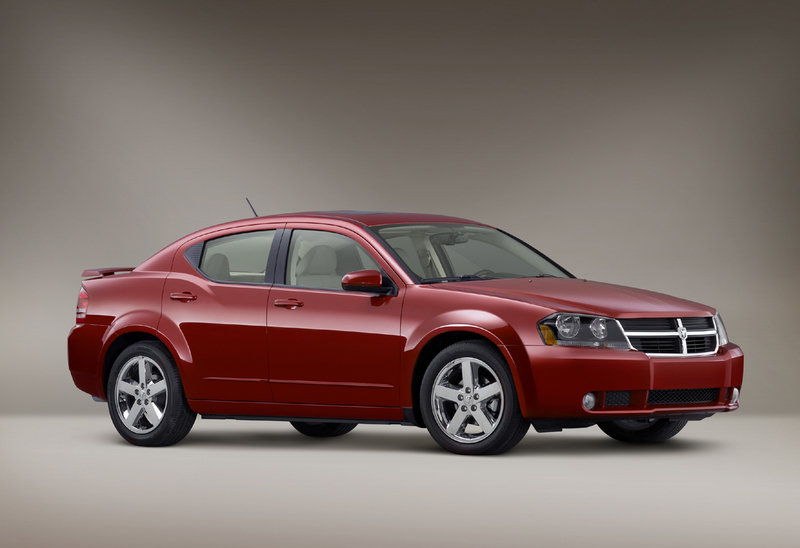
Dodge Avenger (2008–2014)
The Dodge Avenger was Dodge’s attempt to modernize its mid-size sedan offerings and appeal to a younger demographic with aggressive styling and sporty marketing. Unfortunately, while it looked sharp, the car’s construction didn’t match its marketing bravado. The Avenger was a vehicle that seemed to age prematurely, with build-quality issues that surfaced early and persisted. Within just a few thousand miles, many owners began hearing the telltale signs of a car that simply wasn’t screwed together tightly enough.
One of the most commonly reported issues with the Avenger was dashboard and trim noise. The plastic used throughout the cabin was hard and brittle, and over time, it began to creak with temperature changes. Panels would flex visibly when pressed, and in some cases, they began to separate slightly from their mounts. The HVAC vents rattled over bumps, and the glove box frequently became misaligned, causing additional vibrations. The impression was of a car that had been rushed through final assembly.
Suspension and steering components also seemed to suffer from lax quality control. Owners complained of clunks and thuds from the front suspension as early as 30,000 miles. The front strut mounts and sway bar bushings were common failure points, and once those began to deteriorate, the car transmitted every bump and road irregularity straight into the cabin. Over time, the car felt loose and noisy, more like a well-worn used vehicle than a mid-size sedan with only moderate mileage.
The doors were another weak point. Hinges often developed squeaks, and door seals began to lose their grip, leading to wind noise and rattling on the highway. The rear windows, in particular, would develop a noticeable vibration when partially rolled down, a sign of insufficient bracing inside the door. These may seem like small annoyances, but they added up to a car that constantly reminded its driver of its shortcomings.
The Avenger’s design had potential, and the engines—especially the later 3.6L V6—were fairly robust. But the rest of the package let it down. Dodge clearly prioritized price and style over substance, and the result was a sedan that looked mean but felt fragile. With persistent cabin noises and mechanical sounds developing at alarmingly low mileage, the Avenger became yet another Dodge that failed to live up to its aggressive branding.
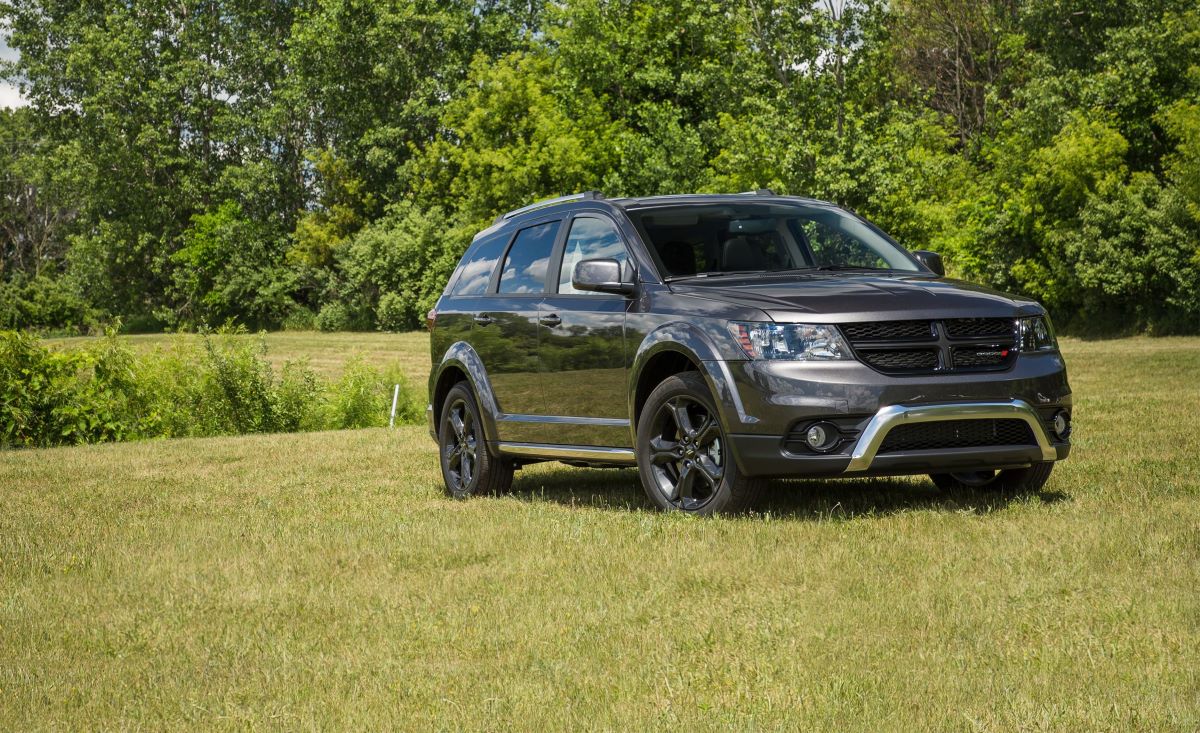
Dodge Journey (2009–2020)
The Dodge Journey was an ambitious concept: an affordable, midsize crossover that combined the utility of a minivan with the footprint of an SUV. Unfortunately, what it offered in practicality, it sorely lacked in build quality. As the Journey aged, even modestly, owners reported a symphony of rattles and squeaks that seemed to come from every direction. From loose dash panels to noisy door seals, the Journey quickly earned a reputation as one of the most rattly vehicles in Dodge’s modern history.
One of the primary issues stemmed from the Journey’s interior materials. While Dodge attempted to dress up the cabin with soft-touch panels in higher trims, the basic structure of the interior was never sound. Plastic pieces would shift over time, particularly in high-traffic areas like the center console and door armrests.
The three-row configuration meant more interior panels, more moving parts—and more opportunities for noise. The second and third rows, in particular, were sources of constant squeaking as the seat latches and hinges wore out.
Road isolation was poor as well. With a relatively soft suspension and limited insulation, the Journey allowed a significant amount of vibration to enter the cabin. Once that vibration was present, the rest of the car’s interior seemed to respond in chorus. Seat frames would buzz, rear cargo panels would shudder, and the roof lining would vibrate at highway speeds. Even newer Journeys with under 50,000 miles were known for sounding older than their years.
Mechanical durability was also lacking in early models. Engine mounts wore prematurely, leading to engine vibration that could be felt (and heard) throughout the vehicle. The four-cylinder engine, in particular, struggled to maintain composure under load, and this resulted in increased cabin noise during acceleration. Transmission whine, clunky shifts, and suspension groans all combined to make the Journey one of the least acoustically refined vehicles in its class.
While the Journey sold relatively well due to aggressive pricing and incentives, it became a prime example of quantity over quality. Many owners traded in their vehicles early not because of catastrophic failures, but because they simply couldn’t stand the incessant rattling. It’s a case where design convenience and low cost resulted in a driving experience that wore thin long before the mechanical components reached their end of life.
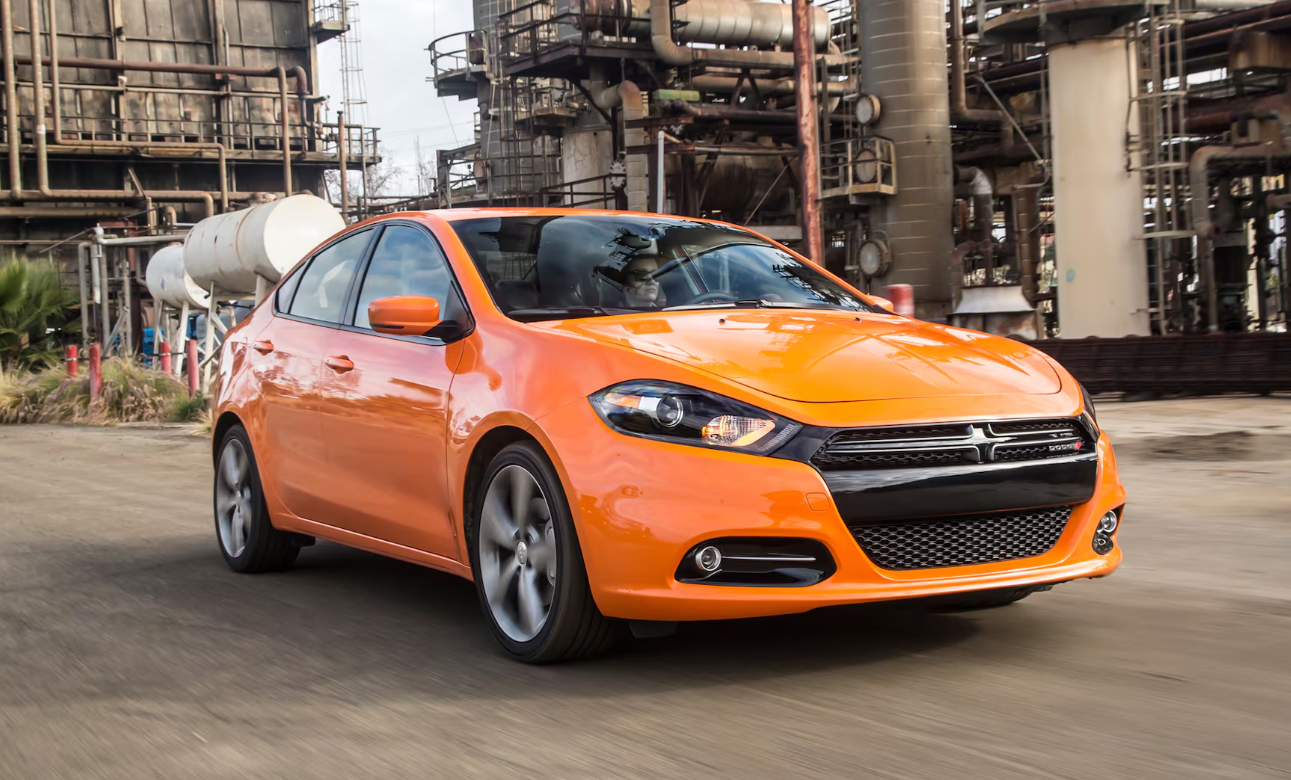
Dodge Dart (2013–2016)
The Dodge Dart was supposed to be a rebirth for Dodge’s compact lineup—a European-inspired, Alfa Romeo-based platform reimagined for American drivers. It was touted as a blend of Italian engineering and American styling, but the execution fell flat. Beneath the sleek exterior and tech-heavy dashboard lurked a car that just didn’t hold together well over time. Owners were quickly disillusioned by a cabin that rattled, buzzed, and vibrated, especially on less-than-perfect roads.
One of Dart’s biggest flaws was its interior build. The dashboard featured an array of digital displays, but the trim surrounding these components was poorly anchored.
As the car aged, creaking became common around the infotainment system, especially in cold weather. Door panels were another trouble spot—they would creak when leaned on or bumped and often developed squeaks during cornering. Even the glove box and center storage areas would become loose or emit noise under moderate use.
Structurally, the Dart lacked the kind of rigidity one would expect from a modern compact car. The chassis was not as well-reinforced as its European cousins, and that lack of stiffness contributed directly to increased interior noise. When driven over uneven terrain, the body would flex just enough to set off vibrations throughout the cabin. Rear seats and seatbacks in particular became common sources of squeaking and popping, especially when carrying passengers or cargo.
Under the hood, engine and transmission mounts weren’t particularly well-damped, allowing vibration from the powertrain to bleed into the cabin. This was especially noticeable with the 2.0L and 1.4L turbocharged engines. Clutch pedal vibrations, steering column shudders, and inconsistent throttle response created a driving experience that felt unrefined. Even with low miles, many Darts gave the impression that they needed tightening down.
In the end, the Dodge Dart suffered from a mismatch between concept and reality. While it offered good fuel economy and sleek tech options, its physical construction was disappointing. Persistent rattling, paired with underwhelming drivetrain smoothness, left drivers frustrated and disappointed. It’s no surprise that the Dart was discontinued after only a few years—a short, noisy chapter in Dodge’s long history.
Also Read: 5 Cars Where Minor Repairs Total Over $1,000 And 5 That Stay Manageable
As we’ve explored across a diverse lineup of vehicles, Dodge’s legacy is one of dramatic highs and frustrating lows when it comes to build quality. On one hand, models like the Dodge Charger, Ram 1500, Durango, Dakota, Magnum, and Viper have demonstrated that the brand is fully capable of producing robust, enduring machines.
These vehicles were either overbuilt, assembled with careful attention to structural integrity, or designed with a purpose that required them to withstand the test of time, whether that be hauling heavy loads, surviving police pursuit duty, or dominating a racetrack lap after lap.
These solidly built models are more than just examples of good design—they’re icons that reinforce the trust some consumers still have in the Dodge badge. Their continued presence on the road speaks volumes about their structural integrity. From thick-gauge steel frames to well-assembled interiors that resist creaks and rattles even with age, these vehicles demonstrate that Dodge can compete with, and sometimes outperform, more “refined” brands in real-world durability.
The mechanical simplicity and thoughtful engineering of these models have given them a second life, often living well beyond 150,000 or even 200,000 miles with relatively few complaints.
But just as some Dodge models inspire confidence, others have unfortunately done the opposite. Vehicles like the Neon, Caliber, Avenger, Journey, and Dart highlight the consequences of budget constraints, platform mismanagement, and rushed execution.
These models often promised innovation or value but failed to deliver the kind of long-term quality buyers expected. Persistent rattles, loose trim, squeaky suspension components, and underbuilt structures made them feel cheap from the outset, and only worse as the years went by.
In some cases, the issues were superficial, limited to interior quality or poor insulation. In others, they were deeper and more problematic, tied to underlying chassis weakness or powertrain integration flaws.
And while these models may have attracted buyers with aggressive pricing, stylish looks, or clever features, the ownership experience often degraded quickly due to the noisy, rattling realities of their construction. In the end, a car can only coast on its aesthetics and technology for so long—solid engineering is what keeps a vehicle enjoyable and reliable over time.
For buyers considering a used Dodge today, the lessons are clear. Not all Dodge vehicles are created equal. If you prioritize build quality, structural solidity, and long-term dependability, you’d be wise to stick with the proven performers. A well-maintained Charger or Dakota can offer years of solid, dependable driving with minimal annoyance.
On the other hand, while models like the Caliber or Dart might look good on paper, they may become irritating companions as their trim shakes loose and their ride becomes increasingly compromised.
Dodge has always been a brand that thrives on emotion—bold designs, aggressive marketing, and powerful engines. But beneath the surface, it’s the engineering and build quality that ultimately define whether a car becomes a legend or a liability.
By examining the best and worst of what Dodge has produced, we not only get a clearer picture of the brand’s identity, but also the timeless importance of how a car is put together. Because in the end, a car that feels solid is a car worth keeping.
